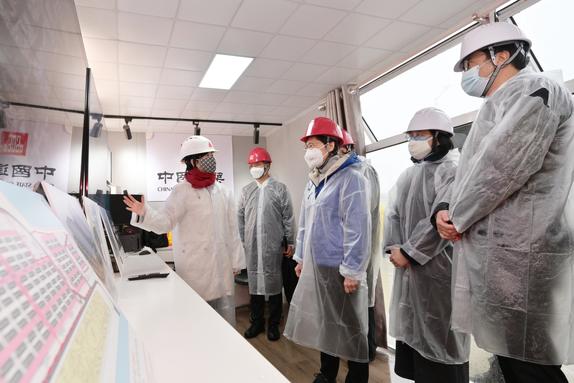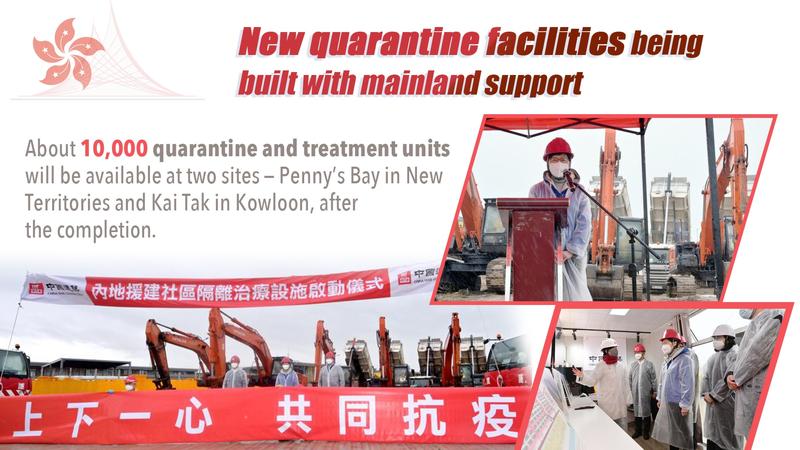 Hong Kong Chief Executive Carrie Lam Cheng Yuet-ngor (center) officiates at the commencement ceremony of the construction of community isolation and treatment facilities at Penny’s Bay, Feb 19, 2022. (PHOTO / HKSAR GOVERNMENT)
Hong Kong Chief Executive Carrie Lam Cheng Yuet-ngor (center) officiates at the commencement ceremony of the construction of community isolation and treatment facilities at Penny’s Bay, Feb 19, 2022. (PHOTO / HKSAR GOVERNMENT)
HONG KONG - The construction of new community quarantine and treatment facilities began in Hong Kong on Saturday afternoon, with support from the Chinese mainland.
About 10,000 quarantine and treatment units are expected to be available after the completion of the facilities, under construction at two sites — Penny’s Bay, in Lantau, New Territories; and Kai Tak in Kowloon.
READ MORE: Hong Kong gets full support, more help on the way
 Hong Kong Chief Executive Carrie Lam Cheng Yuet-ngor officiates at the commencement ceremony of the construction of community isolation and treatment facilities at Penny’s Bay, Hong Kong, Feb 19, 2022. (PHOTO / HKSAR GOVERNMENT)
Hong Kong Chief Executive Carrie Lam Cheng Yuet-ngor officiates at the commencement ceremony of the construction of community isolation and treatment facilities at Penny’s Bay, Hong Kong, Feb 19, 2022. (PHOTO / HKSAR GOVERNMENT)
At an event marking the launch of the construction at Penny’s Bay on Saturday, Hong Kong Chief Executive Carrie Lam Cheng Yuet-ngor expressed gratitude for the support of the central government, which sent mainland construction teams to Hong Kong to help with the projects.
ALSO READ: Mainland vegetables transported by water arrive in HK
 Hong Kong Chief Executive Carrie Lam Cheng Yuet-ngor (3rd right), accompanied by Secretary for Development Michael Wong Wai-lun (1st right), and Secretary for Food and Health Sophia Chan Siu-chee (2nd right), receives a briefing from the Director of Architectural Services Winnie Ho Wing-Yin (1st left), on the construction process. (PHOTO / HKSAR GOVERNMENT)
Hong Kong Chief Executive Carrie Lam Cheng Yuet-ngor (3rd right), accompanied by Secretary for Development Michael Wong Wai-lun (1st right), and Secretary for Food and Health Sophia Chan Siu-chee (2nd right), receives a briefing from the Director of Architectural Services Winnie Ho Wing-Yin (1st left), on the construction process. (PHOTO / HKSAR GOVERNMENT)
Hong Kong Secretary for Development Michael Wong Wai-lun said all efforts will be made to work together with the mainland teams to complete the projects in an efficient manner.
The government is also pursuing other possibilities for increasing the capacity of quarantine and treatment facilities, including using newly completed public housing buildings, and converting hotel rooms and indoor fitness premises.



